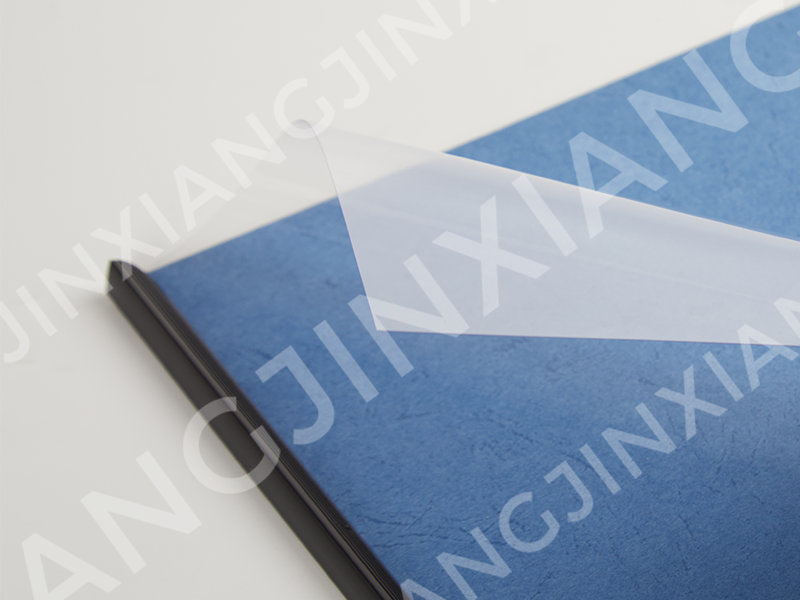There are some special considerations when using PVC binding covers with heavily inked or laser-printed documents. PVC binding covers can work well with such documents, but you should keep the following considerations in mind:
1.Ink Drying Time: Before proceeding with the binding process, allow ample time for the ink on your printed documents to thoroughly dry. This step is critical to prevent any smudging or transfer of wet ink onto the PVC cover, which could compromise the overall presentation quality.
2.Ink Compatibility: Assess the compatibility of the ink used on your documents with PVC material. Some ink formulations may not adhere well to PVC surfaces, potentially leading to issues such as poor print quality, ink smearing, or even delamination of the printed content from the PVC cover. Consult your printer manufacturer's recommendations for ink compatibility with PVC substrates.
3.Document Alignment: Ensure precise alignment of your documents within the PVC binding cover. Proper alignment guarantees that the inked content is centered and parallel, maintaining a polished and professional appearance. Misalignment can result in uneven margins or skewed text, which may detract from the overall impact of your presentation.
4.Ink Type: When dealing with laser-printed documents, particularly those using toner-based ink, verify that the toner is well-fused to the paper. Adequate fusion is essential to prevent toner smudging or flaking when the document is bound within the PVC cover. Adjust printer settings, if necessary, to ensure optimal adhesion of the toner to the paper.
5.Document Thickness: Consider the thickness of your documents when selecting an appropriate PVC cover thickness. Heavily inked or laser-printed documents often exhibit increased bulk. Opt for a thicker PVC cover to accommodate this additional bulk effectively, minimizing stress on the binding and preserving the document's integrity.
6.Sheet Protector Usage: For documents particularly susceptible to smudging or ink transfer, consider using transparent sheet protectors or clear acetate covers before placing them inside the PVC binding cover. These protective layers create an additional barrier, shielding the inked content from direct contact with the PVC surface and reducing the risk of smudging or transfer.
7.Binding Method: Choose a binding method that aligns with your document type, size, and inked content. PVC covers are compatible with various binding methods, such as comb binding, coil binding, or wire binding. Select the binding method that best suits your specific requirements while ensuring that it complements the presentation's overall aesthetics.
8.Handling Care: Exercise meticulous care when handling documents during the binding process. Ensure that your hands are clean and dry to prevent any potential smudging or transfer of ink. Delicately position each page within the PVC cover to maintain the document's pristine appearance.
By following these professional considerations, you can confidently use PVC binding covers with heavily inked or laser-printed documents, enhancing the presentation quality and professionalism of your materials.


COLOR: Clear/ Transparent Red/Yellow/Blue/Green/Smoky gray/Maroon... Opaque sheet can also be produced.
SPECIFICATION: A4 / A3 / Letter / Legal / Customizable
THICKNESS: 100--600Micron, can be customized.
(Best-selling specifications: 150mic/180mic/200mic)





 English
English 中文简体
中文简体 Español
Español


















